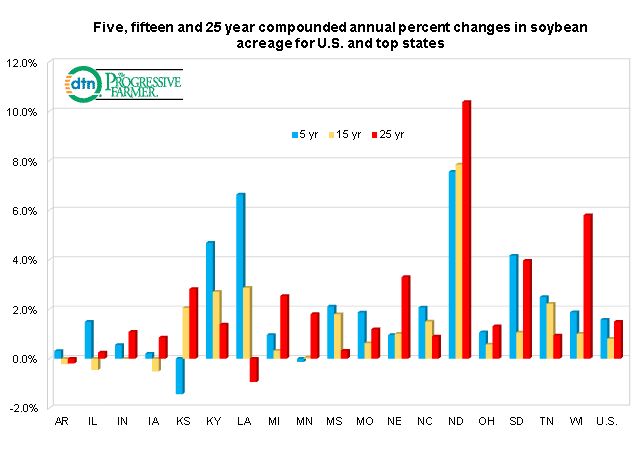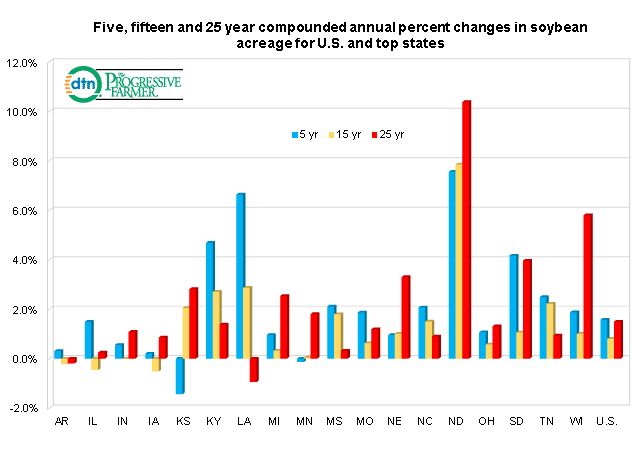Fundamentally Speaking
5, 15 and 25 Year Acreage Trends for Soybeans
U.S. soybean acreage has expanded in the U.S. by leaps and bounds over the past number of years, spurred by increased global demand for high protein meals and vegetable oils.
Since 1990, the increase has been 45% with a 16% rise the past ten years and even over the past five seasons, domestic planted area has expanded by 8%.
Similar to a piece we did earlier on corn, this graphic shows the five, fifteen, and twenty-five year compounded annual growth rates (CAGR) of soybean planted acreage in the top 18 producing states and the U.S.
Once again it is striking to note the large increase in soybean seedings in areas outside the "traditional" Midwest growing areas even though soybean acreage has always been more geographically dispersed than corn.
Of particular interest then is the large increase in soybean plantings in some southern states such as KY and LA displacing other crops such as wheat, cotton and perhaps peanuts; in more northern locales such as ND and SD, soybeans and corn acreage has risen rather sharply in place of more common crops in that region of the county such as spring and durum wheat and various oilseeds like rapeseed and sunflowers.
As for 2015 area, the USDA at their Outlook Forum last month tentatively pegged U.S. acreage at 83.5 million, down 0.2 million from last year though the trade seems more inclined to go with a figure closer to 86.0 million.
(KA)
© Copyright 2015 DTN/The Progressive Farmer. All rights reserved.
P[L1] D[0x0] M[300x250] OOP[F] ADUNIT[] T[]






Comments
To comment, please Log In or Join our Community .